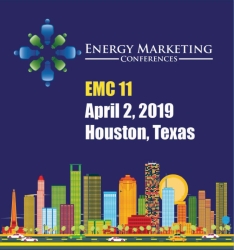|
|
|
|
|
Texas Retail Provider Formally Rolls Out Beta Allowing Payment Via Cryptocurrency
The following story is brought free of charge to readers by EC Infosystems, the exclusive EDI provider of EnergyChoiceMatters.com
Grid+ formally announced the launch of a "beta" program offering retail electric service to customers at Oncor and CenterPoint Energy Houston Electric in Texas
The launch of the beta had been first reported by EnergyChoiceMatters.com in January
Grid+ noted that the beta, "is limited to more traditional REP products."
EnergyChoiceMatters.com had exclusively reported last April that, while Grid+'s business model ultimately envisions peer-to-peer sales and a prepay model, it said that it would not immediately pursue such business models
Grid+ stated, "Our current products are all fixed-price, post-pay which should be very familiar to individuals in Texas. Over the coming months, we will be working towards more innovative products and upgrades that bring us closer to the vision outlined in our white paper."
See our prior story here for further details on Grid+'s ultimate vision and products
During the beta, Grid+ will accept as payment both ether and DAI (two cryptocurrencies), as well as ACH and credit cards. The company said that it will likely add bitcoin support in the near future.
Grid+ stated that future products will likely include:
Faster settlement cycles
"[C]urrent products are settled on a monthly interval, but it is our goal for future products to approach near real time intervals (~15 minutes). In Texas, electricity prices change based on supply and demand in the market on 15 minute intervals, thus it would be ideal to compress billing and payment down to this interval level. Significant price swings can exist in this real time market, but when averaged out over a long period, the real time rate is nearly always advantageous to the end user compared to locking in a fixed-price product. Settling on a short interval is beneficial to both the customer and Grid+ as it lowers our credit risk which then flows to lower prices for customers as we will no longer have to bake risk adjustments into our products to cover bad debt from non-paying customers. It also serves as a principle use case for the Lattice1 device in the energy context by allowing customers to make real time payments in a 100% self-custodial manner (we don’t want to hold your monies)," Grid+ stated
Demand response
"One of the more exciting use cases for the Lattice1 is as a smart home manager. In Texas, customers who consume less electricity during windows of high demand can realize significant savings. When demand massively exceeds expected usage (think really hot days when everyone is cranking their AC) the price of electricity can soar since ERCOT utilizes a scarcity pricing model. If you are wondering the magnitude of these price swings, a single MWh may cost on average ~$50 but the cap ERCOT allows per MWh if demand soars is $9,000. One mechanism for driving deep savings is something called “demand response”, which means the ability to turn off large power sinks when we anticipate a price spike. If customers are able to reduce their consumption during these large increases in price, they can realize significant savings on their bill," Grid+ stated
"We are currently exploring integrations with a variety of smart thermostats and smart plugs which control pool pumps to drive this functionality. HVAC and pool systems combine for roughly ~80% of a consumer’s energy load, thus if we are able to dispatch these systems during large price swings, our customers’ bills should decrease. We will continue investigating these devices and may start integrating towards the end of 2019. A precursor to integration is a fully functioning Lattice1. While the electro-mechanical components are essentially complete, we still have firmware and regulatory testing to finish prior to putting this hardware in our customers’ homes. We are still on target for a Q2 first production run for the Lattice1," Grid+ stated
Layer 2 payments
"Although beta users will soon be able to pay their bills with ether and DAI, these payments are restricted to on-chain transactions. This works for monthly settlement cycles, but quickly becomes untenable as we approach shorter settlement intervals. We have been exploring integrations with various state-channel networks as well as plasma chains in order to reduce the per transaction cost. It is encouraging to see advances in plasma development that are nearing the stage to be tested in the wild. In particular, we are excited about Plasma Group’s Plasma Spec published last week. Once Lattice1 development is completed, we plan to allocate more resources into exploring these integrations at a deeper level," Grid+ stated
ADVERTISEMENT Copyright 2010-16 Energy Choice Matters. If you wish to share this story, please
email or post the website link; unauthorized copying, retransmission, or republication
prohibited.
Reiterates Future Business Model Emphasizing Demand Response, Shorter Settlements
February 11, 2019
Email This Story
Copyright 2010-19 EnergyChoiceMatters.com
Reporting by Paul Ring • ring@energychoicematters.com
NEW Jobs on RetailEnergyJobs.com:
• NEW! -- Chief Operating Officer -- Retail Supplier
• NEW! -- Retail Energy Channel Manager -- Retail Supplier
• NEW! -- Energy Sales Broker
• Business Development Manager -- Retail Supplier -- Houston
• Business Development Manager
• Regulatory & Compliance Analyst -- Retail Supplier
• Sales Quality & Training Manager -- Retail Energy
|
|
|
|









